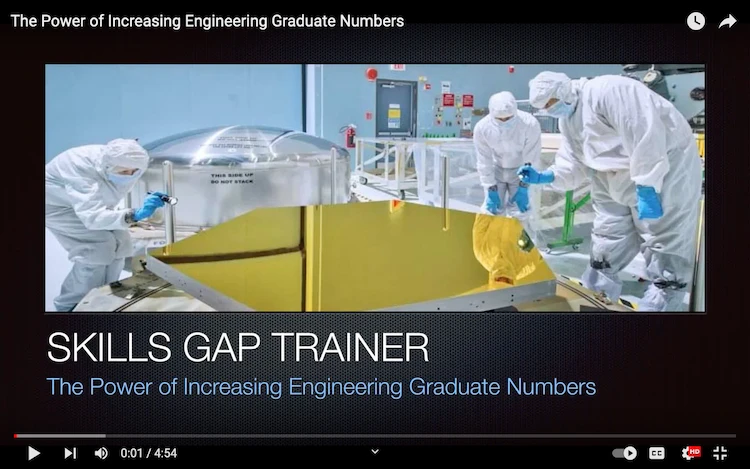The global landscape for engineering talent has shifted significantly in the last few decades, and there’s a clear correlation between a nation’s development and its ability to educate and retain skilled professionals, particularly in fields of science, technology, engineering, and math (STEM). This article seeks to highlight the competitive advantage held by China, largely due to its overwhelming proportion of engineering graduates, and explore strategies that the United States and other nations could adopt to bridge this gap and strengthen their own economies.
In the sphere of global competitiveness, human capital, especially in the STEM fields, is often the key determinant of a nation’s economic growth and ability to innovate. Countries that nurture and attract such talent undoubtedly progress faster, whereas those that don’t, risk being left behind in the race of global development.
In the 21st century, China has emerged as a global hub of engineering talent. As per statistics, 39% of all bachelor degrees awarded in China are in the engineering discipline. This is a staggering number compared to the United States, where only 5% of bachelor degrees are in engineering. South Korea and Japan, known for their export success, also boast significantly higher percentages, at 27% and 20% respectively. These numbers translate into a reality where China graduates approximately 700,000 engineers annually, ten times the number produced by the United States.
This trend has two significant implications. Firstly, China is amassing a large pool of young, technically adept professionals who can fuel innovation and economic growth. Secondly, their education system is effectively addressing the skills gap by integrating academic learning with real-world work experiences, allowing these graduates to enter the workforce immediately post-graduation.
So, what can nations like the United States and Canada, who face an increasing skills gap problem, learn from this?
- Increase the Proportion of Engineering Graduates: Countries like the U.S. and Canada need to promote STEM education aggressively, with a particular focus on engineering disciplines. This requires creating awareness about the opportunities and benefits associated with these fields, incentivizing students to pursue these courses, and providing adequate infrastructure and resources to support such education.
- Bridge the Skills Gap Through Effective Education: Simply producing more engineering graduates isn’t enough. There needs to be a concerted effort to bridge the skills gap by reforming education systems to align academic learning with industry needs. This can be achieved by incorporating more practical, hands-on training, as well as offering co-op and internship opportunities to students during their study period. This not only equips graduates with the skills they need to hit the ground running but also provides them with valuable industry exposure and experience.
- Foster Industry-Academia Collaboration: To ensure that the curriculum stays relevant and up-to-date with the fast-evolving industry trends, partnerships between businesses and educational institutions are essential. Industry can provide valuable insights and inputs on the current and future skills requirements, enabling academia to tailor their curriculum accordingly.
- Invest in Continuing Education and Upskilling: In addition to increasing the number of engineering graduates, countries also need to invest in continuous education and upskilling programs. This would help to keep the skills of existing professionals up-to-date, thereby reducing the skills gap.
The engineering skills gap is a challenge that many countries, including the United States and Canada, are grappling with. However, by learning from the success of countries like China and implementing proactive strategies, it’s possible to bridge this gap, boost the number of skilled professionals, and consequently, drive economic growth and prosperity. A strategic shift in education policy combined with a long-term vision can position these countries on a trajectory towards a vibrant, technologically advanced economy.
Related books and resources:
“STEM the Tide: Reforming Science, Technology, Engineering, and Math Education in America” by David E. Drew – This book provides an insightful analysis into the current state of STEM education in America and offers practical solutions to reform these critical fields.
“The Global Talent Shift: Understanding the New World of Work” by Peter Cappelli – Cappelli examines the changes in the global labour market, including the demand for new skills and how countries like China have become significant players in the global talent arena.
“The New Geography of Jobs” by Enrico Moretti – Moretti’s work explains how and why job opportunities are shifting across global and domestic landscapes, emphasizing the importance of innovation and talent in modern economies.
“Industries of the Future” by Alec Ross – This book explores the sectors that will shape the next decade, including advancements in robotics, genomics, and coding, and how education and workforce development must adapt.
“The Element: How Finding Your Passion Changes Everything” by Sir Ken Robinson – While not exclusively about engineering or STEM, Robinson’s book discusses the importance of finding individual talents and passions, which ties into the broader discussion of developing a skilled, motivated workforce.
“The Talent Code: Greatness Isn’t Born. It’s Grown. Here’s How.” by Daniel Coyle – Coyle investigates how talent is cultivated and how we can harness this understanding to close the skills gap, particularly in technical and engineering disciplines.
“A Whole New Engineer: The Coming Revolution in Engineering Education” by David E. Goldberg and Mark Somerville – This book specifically addresses the revolution needed in engineering education to prepare graduates for the dynamic, technology-driven workforce.
To see our Donate Page, click https://skillsgaptrainer.com/donate
To see our Instagram Channel, click https://www.instagram.com/skillsgaptrainer/
To see some of our Udemy Courses, click SGT Udemy Page
To see our YouTube Channel, click https://www.youtube.com/@skillsgaptrainer